Hiroshi Sugimoto retraces one of the earliest encounters between Japan and the West
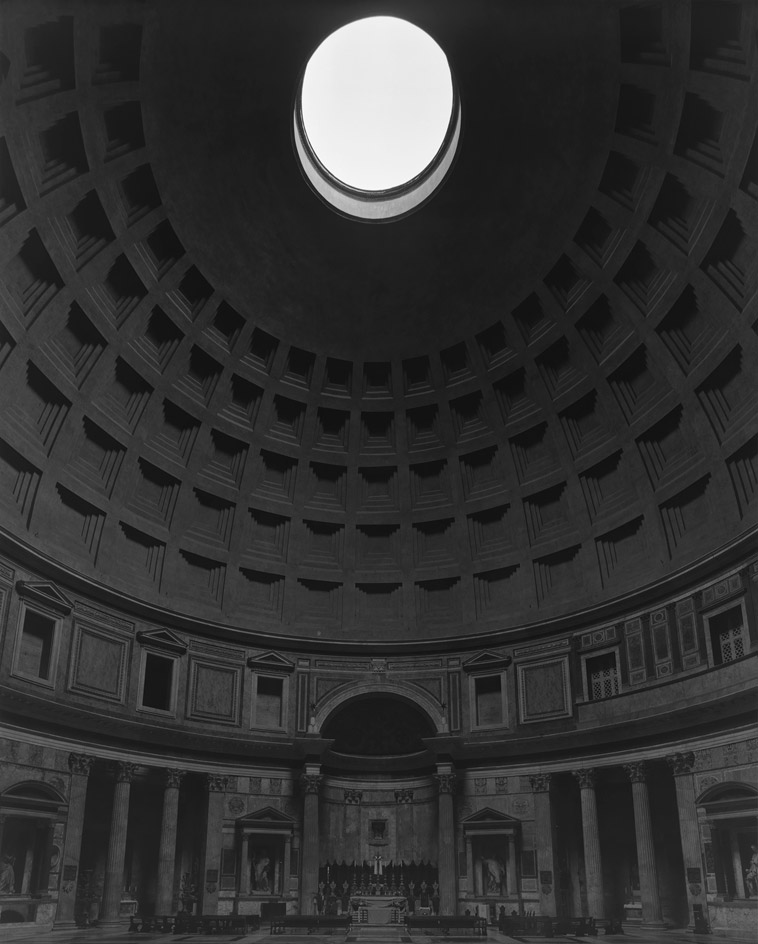
There’s always been something otherworldly in Hiroshi Sugimoto’s photography. Whether it’s the ethereal glow of his empty European theatres, the haunting spirituality suspended in Acts of God (2014), or the serenity of his seascapes – the interplay of shadow and light means much more to the photographer than the juxtaposition of contrasts and colour.
In his latest exhibition, ‘Gates of Paradise’, opening tomorrow at the Japan Society Gallery in New York, the artist addresses the divine directly. Inspired by the four Tenshō embassy boys (the quattro regazzi) who were sent as Catholic converts to Europe to experience Western Christianity first-hand in 1582.
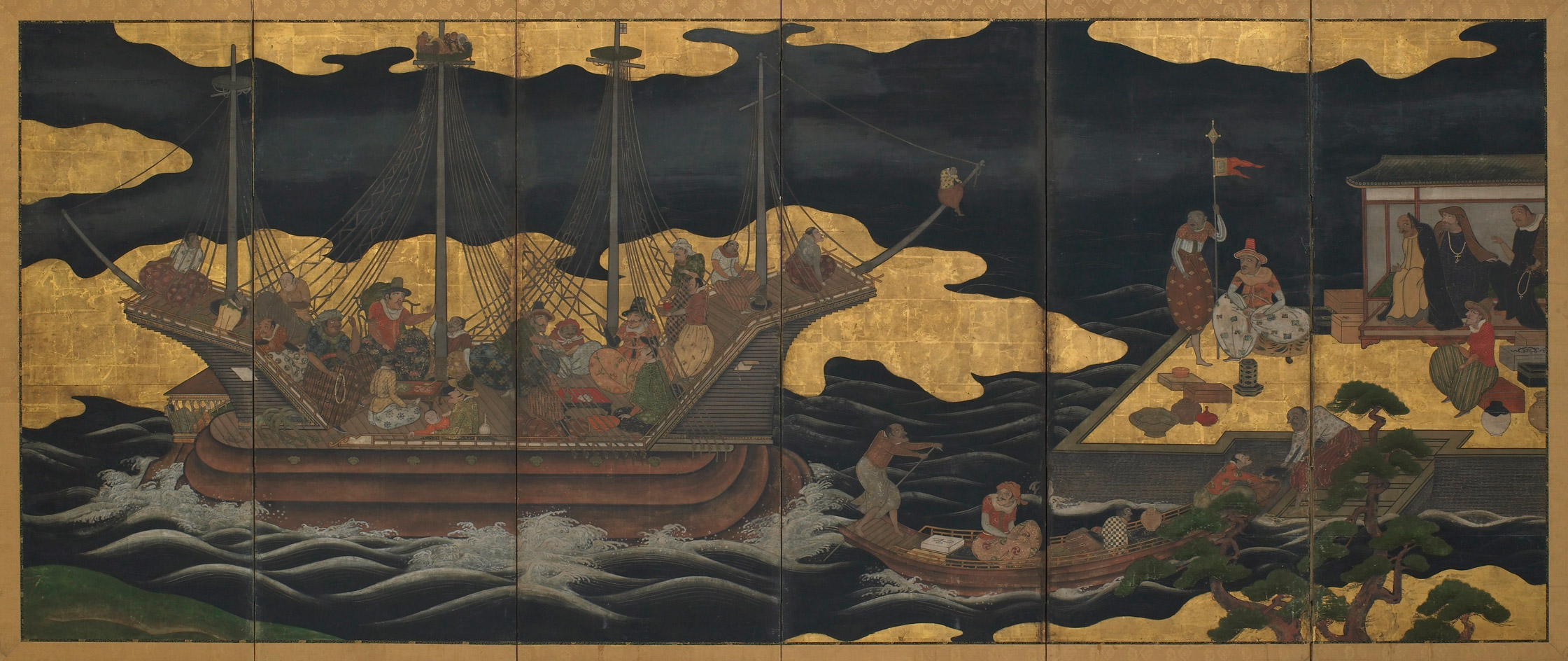
Unidentified artist. A Portuguese Trading Ship Arrives in Japan, Momoyama to Edo period, early 17th-century, by unidentified artist. Courtesy of Feinberg Collection. Smithsonian Institution
Sugimoto – who himself has travelled through Italy in 2015 to shoot new additions for his Theatres series – visited sites the Japanese missionaries stopped on their journey in the 16th century, including the Duomo in Florence, the Pantheon in Rome and the Leaning Tower of Pisa.
The story retraces the historical and religious links between Japan and the West brought to the mainstream attention by Martin Scorsese’s Silence, taking place after the suppression of Japanese Roman Catholics during the Shimabara Rebellion that would follow a century after the Tenshō teenagers’ mission. This little known period of history sheds new light on the relationship and cultural exchange between Japan and the West.
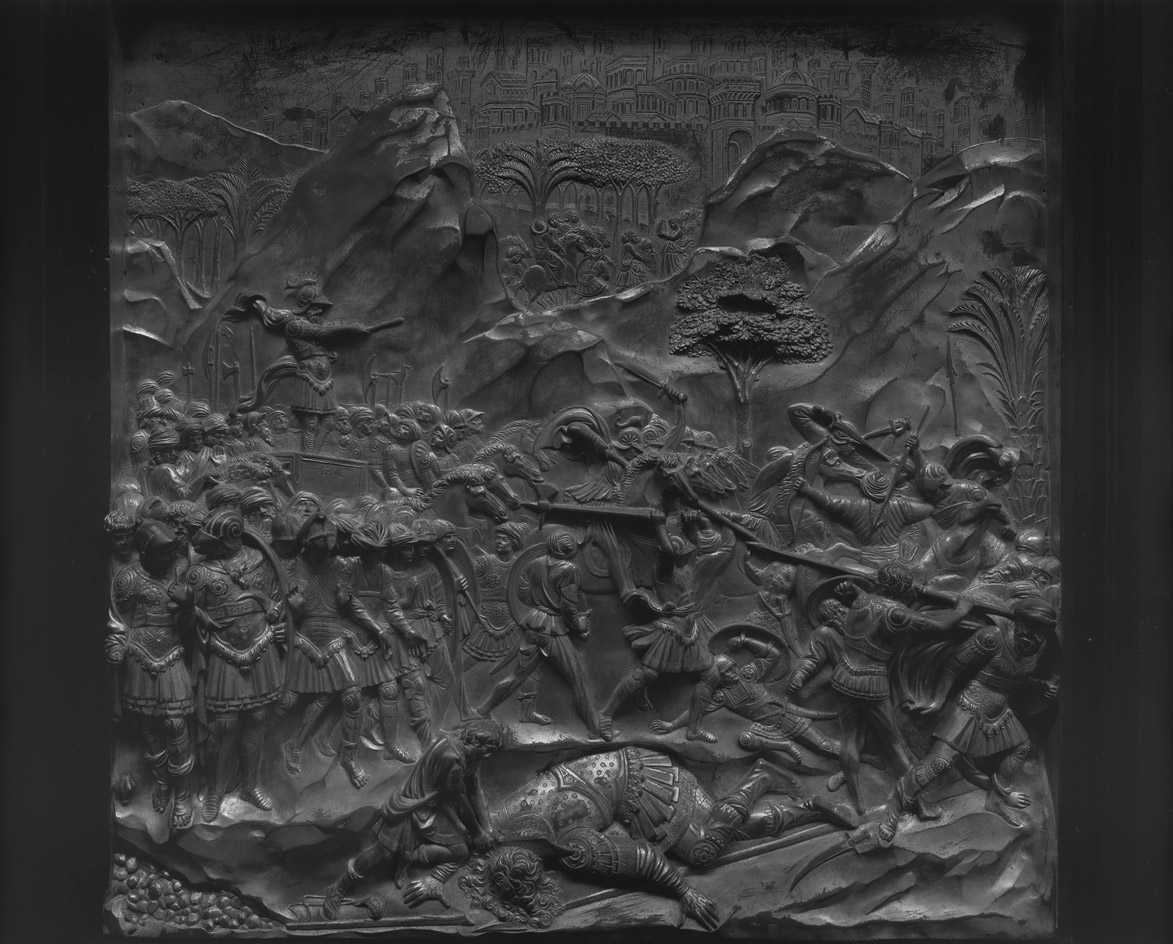
Gates of Paradise 9 – David, 2016, by Hiroshi Sugimoto, gelatin silver print. © The artist
Sugimoto’s imposing black and white photographs, often shot from below to suggest the smallness of mankind, will be presented alongside Japanese nanban masterpieces from the 16th and 17th century – a style of East-West hybrid art, produced in Japan following exposure to traders and missionaries from Europe, in particular from Portugal. Other works date back as far as the 13th century.
Sugimoto has also redesigned the garden at the Japanese Society, with large bonsai and ceramic tiles imported from Kyoto; between 3-5 November, he will be staging his own Noh play in the auditorium.

Pieta by Michelangelo, 2016, by Hiroshi Sugimoto, gelatin silver print. © The artist

Unidentified artist, IHS wooden lacquered box, Momoyama period, 16th century, by unidentified artist. Champleve enamel pyx, early 13th century, enamel on iron, by unidentified artist. Gilt bronze crucifix, 13th century, displayed on cypress wood. Courtesy of Odawara Art Foundation.
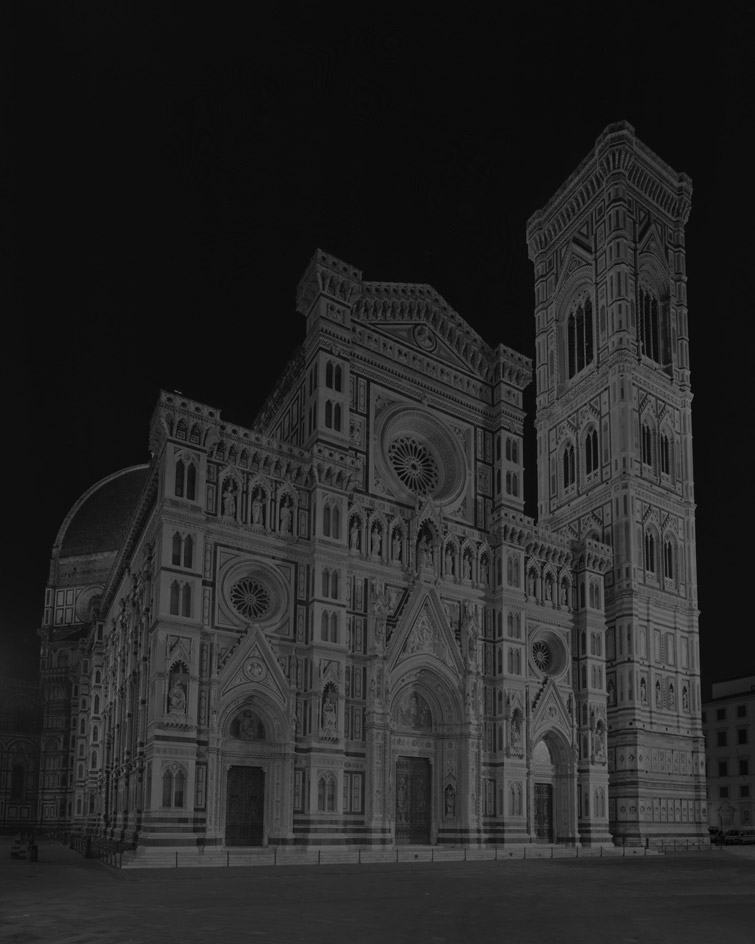
Duomo, Florence, 2016, by Hiroshi Sugimoto, gelatin silver print. © The artist

Staircase at Villa Farnese II, Caprarola, 2016, by Hiroshi Sugimoto, gelatin silver print. © The artist. Courtesy of the Polo Museale del Lazio-Ministry of Cultural Heritage and Italian Tourism

Summer Grass, 2015, colour on wood, by Yoshihiro Suda. Akoda shaped helmet, circa 14th century, iron and gold, by unidentified artist, attributed to have been worn by Ōtomo Sōrin.
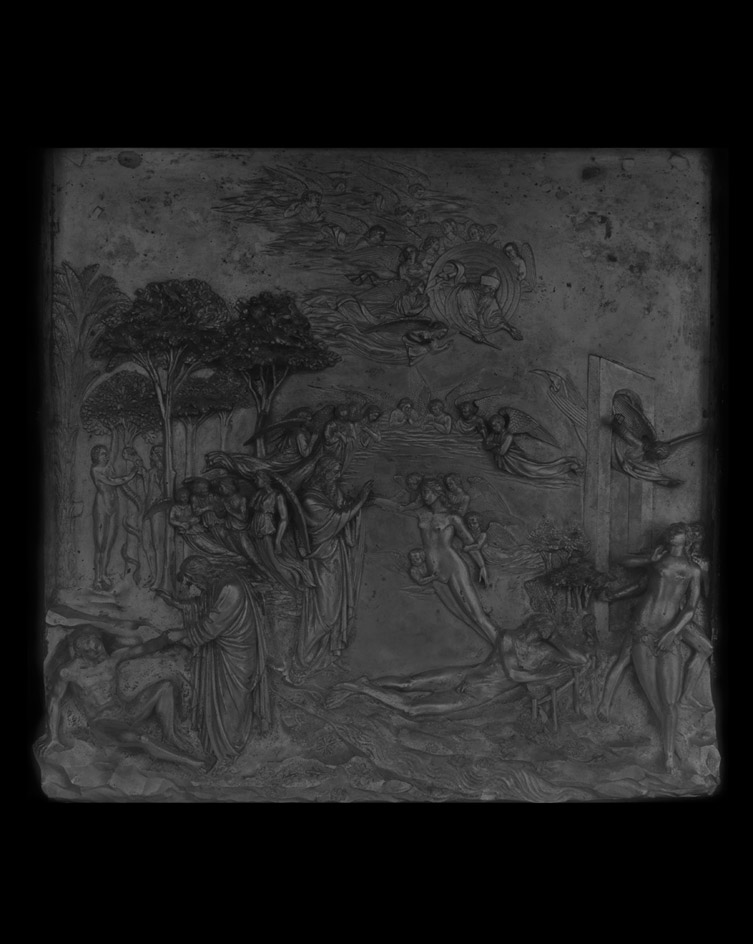
Gates of Paradise 1 – Adam and Eve, 2016, by Hiroshi Sugimoto, gelatin silver print. © The artist
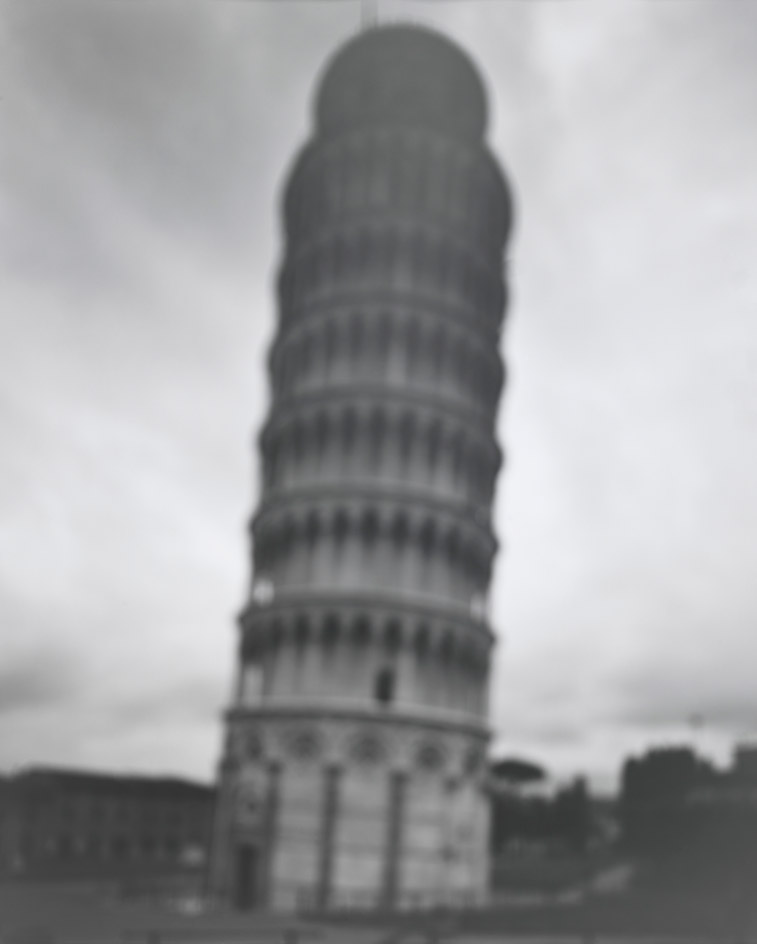
Leaning Tower of Pisa, 2014, by Hiroshi Sugimoto, gelatin silver print. © The artist

Written by Toyotomi Hideyoshi (1537–1589); addressed to Kita-no- Mandokoro (1546–1624), principal wife of Hideyoshi, Letter, 1594. Hanging scroll, ink on paper. Collection of MOA Museum of Art, Shizuoka. Courtesy of MOA Museum of Art
INFORMATION
‘Gates of Paradise’ is on view 20 October – 7 January 2018. For more information, visit the Japan Society website
ADDRESS
Japan Society Gallery
333 E 47th Street
New York
Receive our daily digest of inspiration, escapism and design stories from around the world direct to your inbox.
Charlotte Jansen is a journalist and the author of two books on photography, Girl on Girl (2017) and Photography Now (2021). She is commissioning editor at Elephant magazine and has written on contemporary art and culture for The Guardian, the Financial Times, ELLE, the British Journal of Photography, Frieze and Artsy. Jansen is also presenter of Dior Talks podcast series, The Female Gaze.
-
 ‘I want to bring anxiety to the surface': Shannon Cartier Lucy on her unsettling works
‘I want to bring anxiety to the surface': Shannon Cartier Lucy on her unsettling worksIn an exhibition at Soft Opening, London, Shannon Cartier Lucy revisits childhood memories
-
 What one writer learnt in 2025 through exploring the ‘intimate, familiar’ wardrobes of ten friends
What one writer learnt in 2025 through exploring the ‘intimate, familiar’ wardrobes of ten friendsInspired by artist Sophie Calle, Colleen Kelsey’s ‘Wearing It Out’ sees the writer ask ten friends to tell the stories behind their most precious garments – from a wedding dress ordered on a whim to a pair of Prada Mary Janes
-
 Year in review: 2025’s top ten cars chosen by transport editor Jonathan Bell
Year in review: 2025’s top ten cars chosen by transport editor Jonathan BellWhat were our chosen conveyances in 2025? These ten cars impressed, either through their look and feel, style, sophistication or all-round practicality
-
 Out of office: The Wallpaper* editors’ picks of the week
Out of office: The Wallpaper* editors’ picks of the week'Tis the season for eating and drinking, and the Wallpaper* team embraced it wholeheartedly this week. Elsewhere: the best spot in Milan for clothing repairs and outdoor swimming in December
-
 Nadia Lee Cohen distils a distant American memory into an unflinching new photo book
Nadia Lee Cohen distils a distant American memory into an unflinching new photo book‘Holy Ohio’ documents the British photographer and filmmaker’s personal journey as she reconnects with distant family and her earliest American memories
-
 Out of office: The Wallpaper* editors’ picks of the week
Out of office: The Wallpaper* editors’ picks of the weekIt’s been a week of escapism: daydreams of Ghana sparked by lively local projects, glimpses of Tokyo on nostalgic film rolls, and a charming foray into the heart of Christmas as the festive season kicks off in earnest
-
 Ed Ruscha’s foray into chocolate is sweet, smart and very American
Ed Ruscha’s foray into chocolate is sweet, smart and very AmericanArt and chocolate combine deliciously in ‘Made in California’, a project from the artist with andSons Chocolatiers
-
 Inside the work of photographer Seydou Keïta, who captured portraits across West Africa
Inside the work of photographer Seydou Keïta, who captured portraits across West Africa‘Seydou Keïta: A Tactile Lens’, an exhibition at the Brooklyn Museum, New York, celebrates the 20th-century photographer
-
 Out of office: The Wallpaper* editors’ picks of the week
Out of office: The Wallpaper* editors’ picks of the weekFrom sumo wrestling to Singaporean fare, medieval manuscripts to magnetic exhibitions, the Wallpaper* team have traversed the length and breadth of culture in the capital this week
-
 María Berrío creates fantastical worlds from Japanese-paper collages in New York
María Berrío creates fantastical worlds from Japanese-paper collages in New YorkNew York-based Colombian artist María Berrío explores a love of folklore and myth in delicate and colourful works on paper
-
 Out of office: the Wallpaper* editors’ picks of the week
Out of office: the Wallpaper* editors’ picks of the weekAs we approach Frieze, our editors have been trawling the capital's galleries. Elsewhere: a 'Wineglass' marathon, a must-see film, and a visit to a science museum